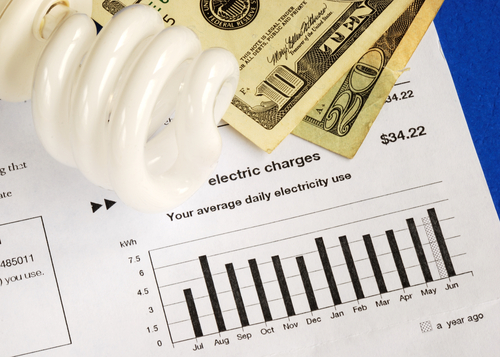FERC chairman, Pepco CEO agree: Energy affordability is doable

WASHINGTON — Neil Chatterjee, chairman of the Federal Energy Regulatory Commission (FERC), and David Velazquez, president and chief executive officer of Pepco Holdings Inc., agree that collaborations between and among regulators, utilities and other stakeholders will successfully bring affordable energy to low-income customers.
Disadvantaged populations around the United States pay a disproportionately higher amount of their income for energy compared to other customers and experience barriers when trying to access energy, according to the National Association of Regulatory Utility Commissioners (NARUC).
This situation will continue or worsen under the clean energy future, according to NARUC, if regulators don’t approach the challenges of clean energy and affordability in concert.
Therefore, it’s important for state regulators to try and work together and in tandem with the federal government to tackle a changing energy landscape, Chatterjee said in opening remarks to a Feb. 11 joint session on energy affordability held by NARUC during its 2020 Winter Policy Summit.
“Collaboration is the essential step towards finding meaningful solutions,” said Chatterjee. “This is particularly important when it comes to ensuring affordable energy for consumers across the nation.”
Many factors currently are contributing to the nation’s modern era of energy reliance, he added, pointing to the “historic lows” in energy prices that have been driven in part by the shale revolution and renewables.
Additionally, said Chatterjee, “rapid advancements in technology are transforming our nation’s energy infrastructure and markets, allowing consumers to become more active market participants and to take greater control of their energy usage.”
While these factors have provided benefits to consumers in terms of more affordable energy, Chatterjee also said that regulators must ensure that their decisions and processes are not standing in the way of further growth and innovation.
Following the FERC chairman’s remarks, panelists during the joint session, entitled “A New Approach to Energy Affordability,” offered their perspectives on energy affordability challenges and how opportunities exist for regulators, consumer advocates and utilities to drive a more successful approach that doesn’t leave behind the nation’s low-income customers.
Pepco, which is an Exelon Corp. company, provides electric service to roughly 842,000 customers in Washington, D.C., and Maryland. The energy company, for which Velazquez has served as CEO since 2016, also is committed to sustainability and giving back to the customer — both embedded in what state public utility commissions are tasked with addressing.
Velazquez said the company has “a strong mission” to drive a clean energy future for the communities it serves, one that is “inclusive, equitable and affordable.”
Across all customers served by Pepco, Velazquez said that no matter whether they live in rural, urban or suburban areas, affordability is important to them all.
“It is not just something we see in our cities,” he said, “but is something that we see across all of our territories.”
And part of the challenge in moving toward a sustainable future, said Velazquez, is to ensure that the energy Pepco provides remains “inclusive, equitable and affordable” for all its customers.
Pepco is doing several things toward that goal, he said.
For instance, Pepco is currently focused on its proposed multi-year rate plan that will allow the company to support its efforts to make the grid smarter, stronger and cleaner while also keeping energy affordable, said Velazquez.
The proposal retains all the existing protections and programs that Pepco has today, he added, pointing out that low-income customers still won’t have to pay an energy efficiency surcharge. There’s also a residential aid credit that covers the entire distribution charge for low- and moderate-income customers, who won’t pay any increased rates, nor see any energy distribution charge.
Energy efficiency and solar are also other areas in which Pepco is trying to support low- and moderate-income customers and address climate change by reducing carbon emissions.
“There’s no better way to help lower the costs and improve benefits than by just not using as much of the product,” Velazquez said.
Pepco’s programs for these populations of customers, said Velazquez, are seen as part of the company’s clean energy mission. Pepco has even created an internal working group focused on innovative, long-range affordability options.
And while progress is ongoing, “there’s a lot left to be done to address the affordability challenge,” he said.
